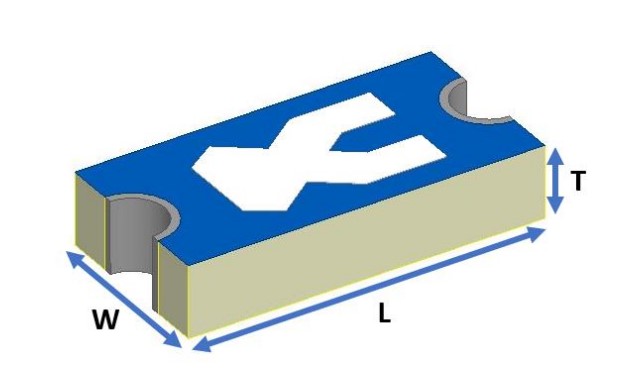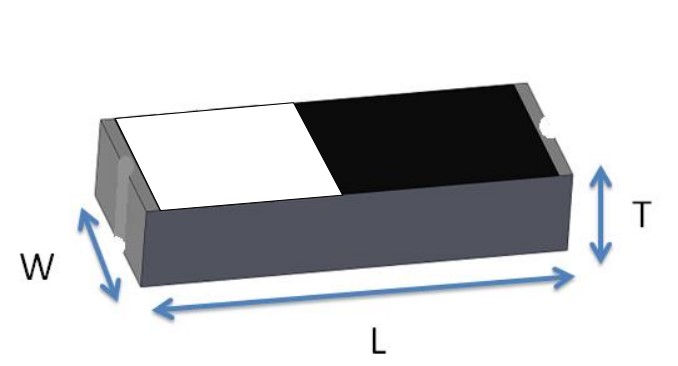什么是透明传输?根据百度百客给出的定义: & nbsp; & nbsp;  透明传输,即透明传输(直通),这意味着无论在通信中传输的业务内容如何,它仅负责从源传输内容。目标地址,而无需更改业务数据的内容。
& nbsp; & nbsp; & nbsp;在实际的MCU产品开发过程中,如果有多个串行端口,则在调试和打印某些模块信息时,大多数人的方法是引出所有模块的TX,RX和GND。分别连接到不同的调试端口,并通过PC终端分别打印出信息。
这样做将不可避免地会犯错误,而且非常麻烦。如果意外连接,将导致模块烧坏。
& nbsp; & nbsp; & nbsp;因此,透明传输模式的出现就是为了解决这个问题,即在程序中指定使用串行端口,连接其他模块的串行端口,然后这个指定的串行端口可以输出这些甚至模块的串行端口信息,我们都可以通过PC上串行模块的TX线将命令发送到下位机,并根据该命令指定输出哪个模块串行端口。这样既方便又快捷,对分析问题和避免实际发展也很有帮助。
繁琐和误操作。 & nbsp; & nbsp; & nbsp;接下来,让我们看一下实现逻辑://条件标记,要打印的内容是根据条件标记确定的。
int debug_condition = 0; #define& nbsp; GENERAL_DEBUG& nbsp; 0 #define& nbsp; MODULE1& nbsp; & nbsp; & nbsp; 1 #define& nbsp; MODULE2& nbsp; & nbsp; & nbsp; & nbsp; 2& nbsp; #define DEBUG(cond,...)if(cond == GENERAL_DEBUG)printf(__ VA_ARGS__)  #define Module1_Debug(cond,...)if(cond == GENERAL_DEBUG || cond == MODULE1)printf(__ VA_ARGS__)  #define Module2_Debug(cond,...)if(cond == GENERAL_DEBUG || cond == MODULE2)printf(__ VA_ARGS__)  GENERAL_DEBUG用作正常输出的标志。当全局变量debug_condition是此符号时,DEBUG宏有效。
MODULE1用作模块1输出的标志。当不需要干扰其他调试信息并且仅需要模块1输出时,Module1_Debug宏有效,而其他无效。
MODULE2也是如此。使用标准C语言模拟此过程:#include& lt; stdio.h& gt; & nbsp; //条件标记,根据条件标记确定要打印的内容int debug_condition = 0; #define& nbsp; GENERAL_DEBUG& nbsp; 0 #define& nbsp; MODULE1& nbsp; & nbsp; & nbsp; 1 #define& nbsp; MODULE2& nbsp; & nbsp; & nbsp; & nbsp; 2& nbsp; #define DEBUG(cond,...)if(cond == GENERAL_DEBUG)printf(__ VA_ARGS__)  #define Module1_Debug(cond,...)if(cond == GENERAL_DEBUG || cond == MODULE1)printf(__ VA_ARGS__)& nbsp; #define Module2_Debug(cond,...)if(cond == GENERAL_DEBUG || cond == MODULE2)printf(__ VA_ARGS__)  & nbsp; int main(void){int cmd = 0; start:printf("请输入命令:
”); scanf(“%d”,& cmd); //将输入命令转发到全局变量debug_condition = cmd; switch(debug_condition){case GENERAL_DEBUG:DEBUG(debug_condition,“ jeadlaksl; dkl; ak
”); Module1_Debug(debug_condition,“ Hello world%d%d%d%d
,, 1,2,3,4); Module2_Debug(debug_condition,“ Hello%d
",1);休息;案例MODULE1:DEBUG(debug_condition,“ jeadlaksl; dkl; ak
”); Module1_Debug(debug_condition,“ Hello world%d%d%d%d
,, 1,2,3,4); Module2_Debug(debug_condition,“ Hello%d
",1);休息; & nbsp;案例MODULE2:DEBUG(debug_condition,“ jeadlaksl; dkl; ak
”); Module1_Debug(debug_condition,“ Hello world%d%d%d%d
,, 1,2,3,4); Module2_Debug(debug_condition,“ Hello%d
",1);休息;默认值:printf("命令输入错误!
”);转到开始break;& nbsp;}返回0; }& nbsp;操作结果:输入0、1、2以外的数字时无效,当输入为1时,将打印模块1的调试信息。
当输入为2点钟时,仅打印模块2的调试信息。当输入为0时,有一种实现方法可以打印所有调试信息。
当然,在单片机上实现它并不难。甚至其他平台也可以以此方式使用。
达到。
公司: 深圳市捷比信实业有限公司
电话: 0755-29796190
邮箱: tao@jepsun.com
产品经理: 陆经理
QQ: 2065372476
地址: 深圳市宝安区翻身路富源大厦1栋7楼

更多资讯
获取最新公司新闻和行业资料。
- KCD7单*单掷全黑无印水船形开关:简洁设计与实用功能的完美结合 水船形开关是一种常见的电器配件,广泛应用于家庭和工业领域。特别是像KCD7这样的单*单掷全黑无印水船形开关,以其简洁的设计和实用的功能深受用户喜爱。这种开关采用高质量材料制造而成,确保了其耐用性和安全性。全黑...
- HJ01单控单开*型墙壁开关:简约设计与实用功能的完美结合 厂家HJ01推出的这款单控单开*型墙壁开关,设计简洁大方,适用于各种家居装饰风格。该产品采用优质材料制造,确保了其耐用性和安全性。安装过程简单便捷,用户可以轻松完成替换旧开关的任务。此外,这款开关在触点设计上...
- G8203单开单控墙壁开关:安全实用与时尚外观的完美结合 G8203单开单控墙壁开关是一款实用与美观并重的产品。它采用优质PC材料制成,具有良好的绝缘性能和耐高温特性,确保使用的安全性。简洁大方的设计使其能够轻松融入各种家居装饰风格之中,无论是现代简约风还是复古经典风...
- K8.0系列单开:简约设计与实用功能的完美结合 墙壁开关插座作为日常生活中不可或缺的一部分,其设计与功能直接影响到我们的居住体验。以K8.0系列单开为例,这款产品不仅在外观设计上追求简约而不失时尚感,还注重实用性和耐用性。该系列采用优质PC材料制成,具有良...
- 飞利浦 Q6-K11Y 一位单级开关:简约设计与实用功能的完美结合 飞利浦 Q6-K11Y 一位单级开关是一款设计简洁、实用性强的家用电器配件。这款开关采用高品质材料制造,确保了其耐用性和安全性。它主要适用于控制单个灯具或小型电器的电源通断,操作简便,只需轻轻一按即可实现开关功能...
- 如何实现IC接口在系统中的应用 在现代计算机系统和软件开发中,接口(Interface)扮演着至关重要的角色,它定义了一组规则和方法,使得不同的组件或系统能够相互协作而无需关心对方的具体实现细节。IC(Integrated Circuit,集成电路)接口是硬件设计中的一个...
- 讯道AXD一位单控开关10A:简约设计与安全性能的完美结合 讯道AXD一位单控开关10A是一款实用的家庭或办公环境用电管理设备。这款开关设计简洁大方,操作简便,适合各种室内装饰风格。它采用高品质材料制造,确保了产品的耐用性和安全性。此款开关支持最大10安培的电流负载,能够...
- KEYENCE传感器:实现高效精准自动化的关键工具 KEYENCE传感器是工业自动化领域内的一种高性能检测工具,它被广泛应用于各种制造和生产环境中。这类传感器以其高精度、响应速度快以及可靠性强等特点而著称,能够满足不同行业对产品质量控制和过程监控的严格要求。无论...
- 欧璐O-墙壁开关:简约设计与实用功能的完美结合 欧璐O-墙壁开关是一款结合了实用性和设计感的产品,特别适合现代家居使用。这款开关设计为一开多三孔单的设计模式,意味着一个开关可以控制多个电器的电源,不仅节省了安装空间,还极大地提升了使用的便捷性。其外观简...
- 广聚墙壁开关:ZC单开单控带五孔开关插座的实用性与设计感 广聚墙壁开关的这款产品——开关插座ZC单开单控带五孔,以其简约而不失时尚的设计风格,成为现代家居装饰的理想选择。该款开关插座不仅外观精致,而且功能实用,能够很好地满足家庭用电的基本需求。其采用优质PC材料制...
- 单层芯片电容器金属层结合力 芯片电容是电路中最基本的元件之一,有着重要而广泛的应用。按芯片电容的应用来分类,电容基本上可分为四种类型:交流耦合,阻断直流仅让信号成分(交流电流)通过;去耦,对频率高的噪声成份起到旁路作用,去耦芯片...
- 实验中,测量输入电阻采用什么方法 输入电阻和输出电阻及其测量方法输入电阻输入电阻是从放大电路输入端看进去的等效电阻。Ri越大,表明放大电路从信号源索取的电流越小,放大电路所得到的输入电压Ui越接近信号源电压Us。然而,若信号源内阻Rs是常量,为使...
- 倒顺开关K03-15:实现机械设备正反转控制的关键元件 倒顺开关K03-15是一种常用的电气设备控制元件,广泛应用于各种机械设备的控制电路中。这种开关通过改变电机的电源相序来实现电动机的正反转控制,从而达到控制机械设备运动方向的目的。倒顺开关K03-15具有操作简便、可靠...
- 简单直流电路中的欧姆定律计算 使用电子设备时,您需要了解的第一件事是如何计算电路中的电压降,电阻和电流。使用欧姆定律,只要您有3个值中的2个,就可以计算该值。有时可能并不很明显,但是我们将通过一些简单的电路来查看计算结果。串联电阻在这...
- TVS管是如何实现稳压功能的? TVS管是通过改变其结构和工作原理来实现稳压功能的。TVS管的基本工作原理是利用二极管的单向导电特性,将电路中的电压分成两个部分。其中,一个电压通过二极管,进入到TVS管的阴极,然后从阳极流出;另一个电压则被限制...
- 如何在TVS管的电路中实现过流保护? 在TVS管的电路中实现过流保护的方法有多种。其中一种方法是在电路中串联一个采样电阻,用于采样负载电流,并将采样电流输入过流保护电路。当负载电流超过预设阈值时,过流保护电路会触发一个脉冲指令来控制调制器,从...
- 智能生活中的“*水按钮”:让植物养护变得更简单 关于“*水按钮”的描述似乎有些不明确,我假设这里可能是指某种设备或技术中的功能按钮,比如在智能家居系统中控制洒水或供水的按钮。那么,我们可以围绕这个概念展开一段详细的描述:在现代科技飞速发展的今天,智能...
- 供应价格质量好的电感磁珠现货现售 电感跟磁珠应当说是两兄弟,很多人一直认为它们都是“通直阻交”,很容易混在一起。正所谓:一母生九子,九子各不同。其实电感和磁珠还是有很大区别的。电感的单位是享,型号也是用电感值来命名的,如:GZ2012-100指2012(...
- GEMS真空压力开关PS81系列:实现高可靠性与长使用寿命 GEMS真空压力开关PS81系列是专为需要高可靠性和长使用寿命的应用设计的。这款压力开关具有出色的性能和耐用性,能够在各种工业环境中稳定工作。PS81系列特别适用于那些要求频繁动作且需要最小维护的系统。其设计考虑了减...
- 安徽合金贴片电阻现货 合金电阻是一种采用合金为电流介质的电阻,一般具有低阻值,高精密,低温度系数,耐冲击电流,大功率等特点。合金的主要材料为铜,再加上其他的材料就成了康铜,锰铜等。其他辅助材料众多,但主要性能由合金材料本身...














